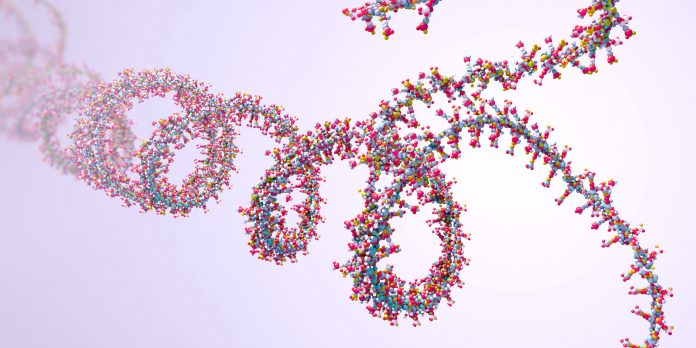
A new study led by researchers at Harvard Medical School demonstrates that RNA could be a viable target for drug development. The researchers developed an unbiased screening strategy that identified small molecules that bind the noncoding RNA prototype Xist, opening a new era in drug development.
The work published in Nature suggests that a new class of biological factors numbering in the thousands can be targeted and thereby heralds a new era in drug development.
Nearly all currently available drugs target one of approximately 700 disease-related proteins among the roughly 20,000 human proteins identified by the Human Genome Project. However, in recent years there has been growing interest in expanding the list of “druggable” targets to include RNA.
The vast majority of RNA in the human genome—98%—is “noncoding.” “These noncoding RNAs play very important roles in the genome, and we now understand that mutations in this noncoding space can result in disease,” said Jeannie Lee, MD, PhD, professor of genetics at Harvard Medical School. “And there may be far more of these RNA genes than there are protein-coding genes. If we could target these RNAs, we would hugely increase the universe in which we can find drugs to treat patients.”
However, the pharmaceutical industry has historically been hesitant to pursue RNA as a drug target. Proteins tend to have stable shapes, or conformations, which make them optimal targets: Drugs bind to proteins like a key in a lock. By contrast, explained Lee, RNA tends to be highly flexible, or “floppy,” and capable of assuming multiple conformations. “If a lock is constantly changing shape, your key is not going to work,” said Lee.
Noncoding RNA’s unstable nature has made companies reluctant to invest in trying to develop medications that target it. However, it’s known that some regions on RNA retain stable conformations, despite all of that shape-shifting, but finding such regions has been a challenge.
Rodrigo Aguilar, PhD, a postdoc in the Lee lab, led a study to find out if RNA could be a viable drug target, using the model of X-chromosome inactivation (XCI), which deactivates one copy of the X chromosome in female mammals and is necessary for normal development. The focus of the study was a form of the noncoding RNA Xist, which silences genes on the X chromosome. Finding a way to interfere with this process and reactivate a dormant X chromosome could help guide development of treatments for genetic disorders caused by mutations on the X chromosome (known as X-linked disorders), such as Rett syndrome and Fragile X syndrome.
The team screened Xist against a library of 50,000 small molecule compounds and found several that bind to a region called Repeat A (RepA) on Xist. One compound, named X1, prevented several key proteins, PRC2 and SPEN, from binding to RepA, which is necessary for Xist to silence the X chromosome. “As a result, X inactivation cannot take place,” said Lee.
Structural biology revealed that, Xist’s RepA can normally assume 16 different conformations. But X1 caused it to adopt a more uniform shape. This structural change prevented RepA from binding with PRC2 and SPEN.
The approach employed in this study could be used to identify other RNA-targeting drugs. “This really opens up a large universe for new drug development,” said Lee. “Now we don’t just have 700 proteins to target using small molecules. In the future, we may have tens and possibly hundreds of thousands of RNAs to target to cure disease.”











